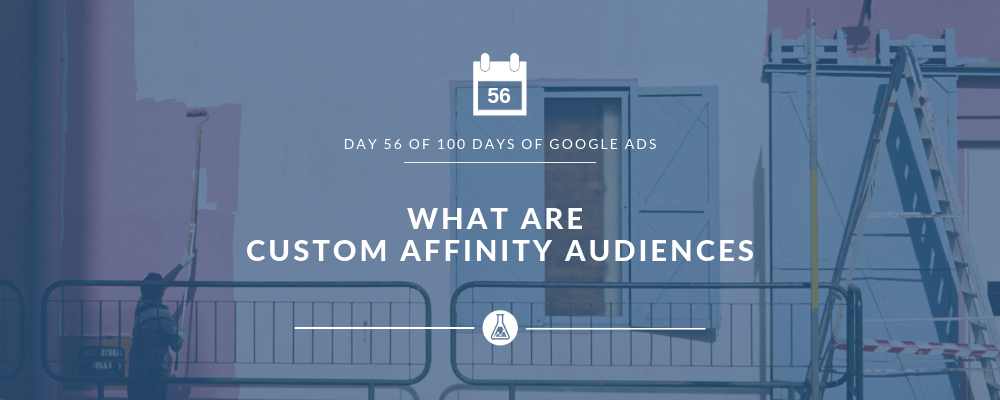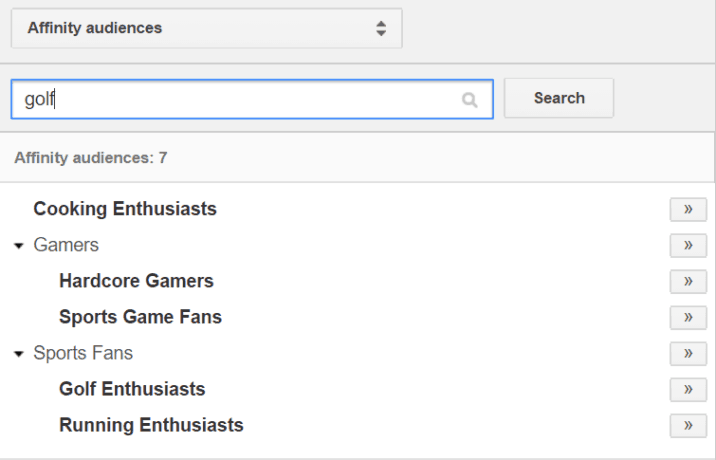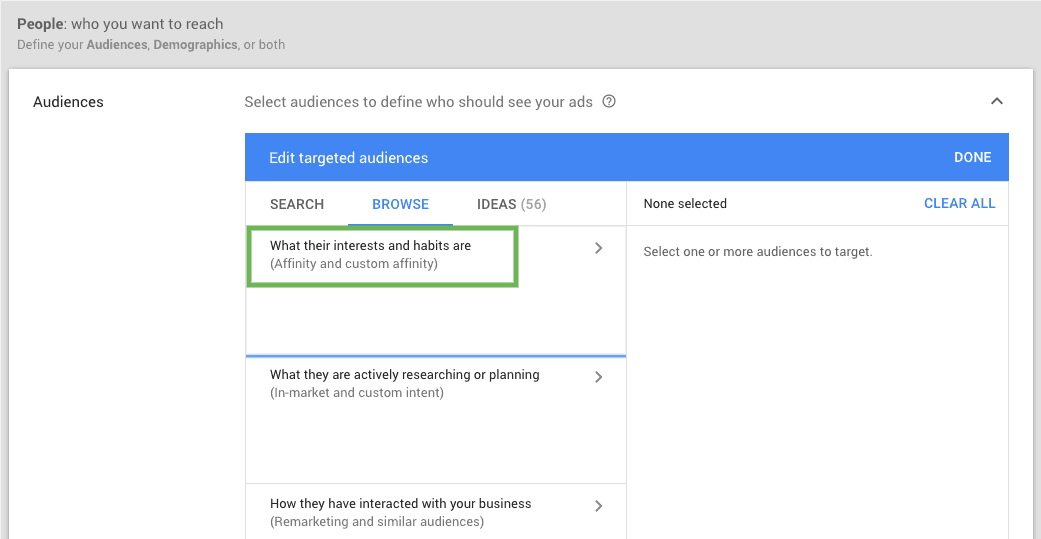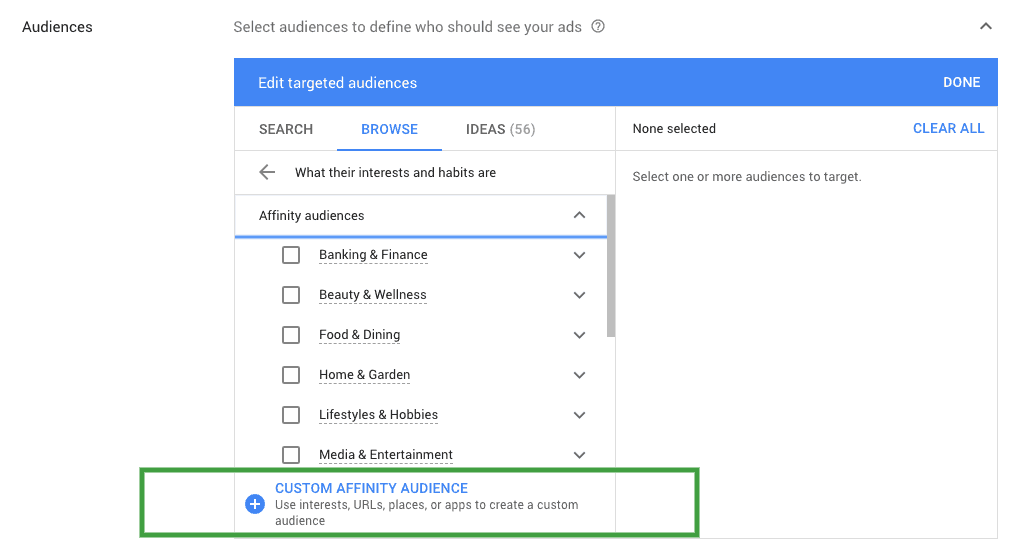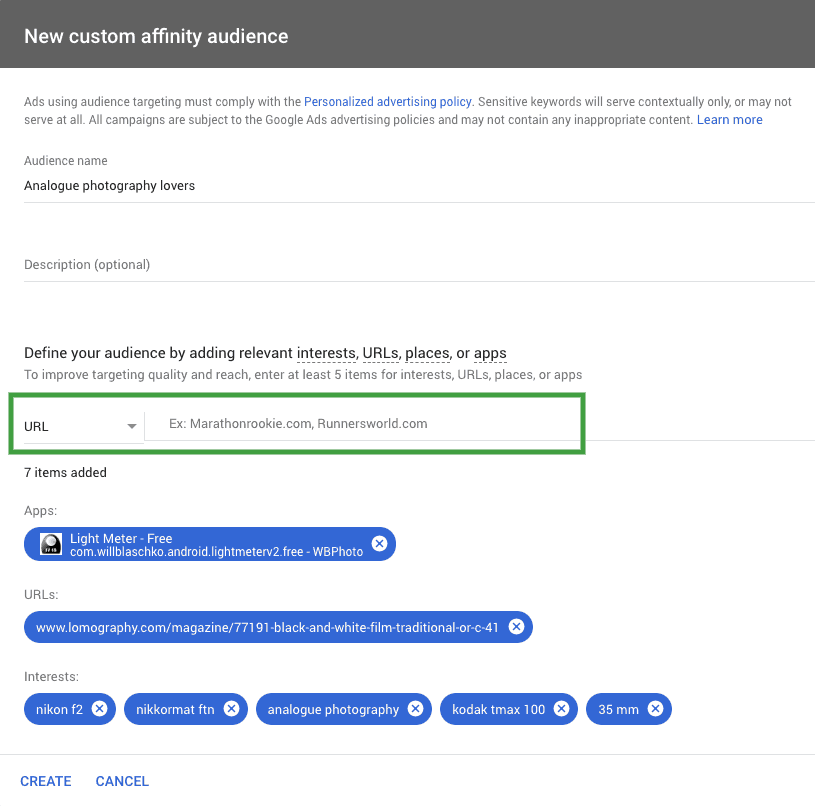Many advertisers run themselves ragged A/B testing different creatives, ad copy, and identifying additional ways to better optimize ad performance.
But here’s what you need to know — while your creatives and copywriting do influence your conversion rate, it’s typically not as impactful as your targeting.
Enter custom affinity audiences (CAAs), the one tool that you can use to fine-tune your targeting, and boost your conversion rates.
Now, you probably already have your basic demographic targeting in place (location, gender, and all that good stuff). That’s great to start off with, but if you want to take your Google Ads to the next level, then creating custom affinity audiences is an absolute must.
In this blog post, we walk you through all you need to know about these audiences, including:
- What are CAAs
- How these audiences differ from affinity audiences and custom intent audiences
- Benefits of CAAs
- How to build CAAs
Ready? Let’s jump right in!
What are custom affinity audiences?
In a nutshell, CAAs are audiences that advertisers create to target groups of people with specific interests, intents, and demographic information. To create these audiences, you provide Google with information, including:
- Your audience’s interests
- URLs (websites) that your audience is interested in
- Types of places that your audience is interested in
- Apps that your audience is interested in
Note that if you specify that your audience is interested in the Google Fit app, this doesn’t mean that your ads will show on this specific app. Instead, Google will look for users that have installed similar fitness-related apps on their phones, and show your ads to them.
Custom affinity audiences vs. Affinity audiences vs. Custom intent audiences
CAA aside, there are also affinity audiences and custom intent audiences. These all sound pretty similar, so let’s take a minute to discuss them and map out their differences.
• Affinity audiences
Firstly, Google defines affinity audiences as audiences that are “built for businesses currently running TV ads” and those who “want to expand the reach of that campaign with an online presence.”
Basically, these audiences are highly generalized TV-style audiences organized by their affinity. Affinity audiences include “Cooking Enthusiasts”, “Food & Dining”, “Travel”, and more.
As compared to affinity audiences, CAAs are more tailored; you can get really granular with these audiences, and dig deep to target your ideal customers. Here’s an example:
- Affinity audience = Sports Fan
- Custom affinity audience = Avid marathon runner
• Custom intent audiences
Custom intent audiences are audiences that allow you to segment ad groups according to the keywords and landing pages you would like to target.
You can either rely on Google’s auto-created audience segments here, or create your own audiences by entering keywords, URLs, and apps related to your product or service.
Once your ads and up and running, Google will serve them to consumers who are searching for the specified keywords or browsing the specified apps/videos. Note that custom intent audiences are only applicable to Display campaigns.
Benefits of custom affinity audiences
CAAs bring about a whole host of benefits, including:
- Targeting on a more granular level
- Exercising creativity when it comes to targeting
- Targeting searchers who are more likely to convert
• More granular targeting
As we’ve mentioned previously, custom affinity audiences give advertisers the ability to get a lot more granular (as compared to standard affinity audiences).
If you can’t quite see this, here’s an example: instead of just tapping into the Cooking Enthusiasts affinity audience, a company selling baking paraphernalia might specifically want to reach customers who like to bake (and are willing to spend big bucks on their equipment).
With CAA, the company might further define this audience by:
- Entering interests like “advanced baking recipes” and “advanced baking skills”
- Using URLs of websites with content about baking, including baking blogs
- Entering places that customers who like to bake might be interested in, like specialty baking shops
- Entering apps that a customer who likes to bake might be interested in, such as apps that help you store and modify recipes, apps that provide measurement conversions, and more
• More creative targeting
Because CAA is so open-ended, this also gives advertisers the power to target more creatively.
For instance, say Search Scientists wants to run a campaign to generate more leads for our company. Instead of just targeting consumers via basic demographics or the topics they’re interested in (bo-ring!), we can use CAA to target consumers that have attended relevant conferences and events.
Since we’re a digital agency, we’d want to reach out to folks who have attended digital marketing conferences such as Digital Summit DC. To do this, we can simply target the URL of Digital Summit DC, and add in other relevant interests such as “digital marketing”, “advertising”, “SEO”, etc.
• Targeting searchers who are more likely to convert
Unless you’re running a branding or awareness campaign, you’re probably hoping to reach out to consumers who are likely to convert. Now, using CAA is a great way of doing that.
The key here is to target interests that are relevant to consumers who are further down the funnel, and more likely to use your product/service.
For example, say you own a subscription box business, and you send out boxes containing dog products and treats.
If you target the affinity audience “Dog Lovers”, you might not necessarily be reaching out to people who own dogs; you might also be serving your ads to people who simply love dogs, or love watching funny dog videos on YouTube.
Here, think of topics that would interest owners of dogs, but are unlikely to be relevant to those who don’t own dogs. For instance, you could use CAA to target interests such as “dog house training”, “dog behavioral training” and more.
By doing this, you’ll be narrowing down your audience, and reaching out to consumers who are a better fit for your product.
How to build custom affinity audiences
Doing your research (and figuring out how you want to structure your CAA) is the tough part. Actually building your CAA, on the other hand, is easier than you’d think. Here’s a step-by-step guide that you can follow:
Step 1: Create a new Display campaign in Google Ads.
Step 2: Click on “Audiences” from the main menu.
Step 3: Click on “What their interests and habits are”.
Step 4: Scroll to the bottom, and click the “+” button to create a new CAA.
Step 5: Name your new audience and set it up with the specific interests, URLs, places, and apps that you want to target.
Step 6: Save your audience, and publish your campaign.
Pro-tip: If you’ve already created a CAA, and you want to use this in one of your existing campaigns, you can do this as well. Just go to that campaign, click on “Audiences”, and click on the Edit button to add a new audience.
A final word on custom affinity audiences
At the end of the day, the goal is to ensure that your ad is as relevant to your consumers as possible. Once you achieve that, it’s half the battle won.
Now, that’s where CAA come in. You can use CAA to fine-tune your targeting and hone in on a highly specific segment. Now that you’re marketing to a specific segment, this allows you to tailor your ad to them, and make it more relevant.
For those of you who haven’t experimented with CAA yet, go ahead and try these out! If you have any questions about CAA, hit us up in the comments below 👇.

